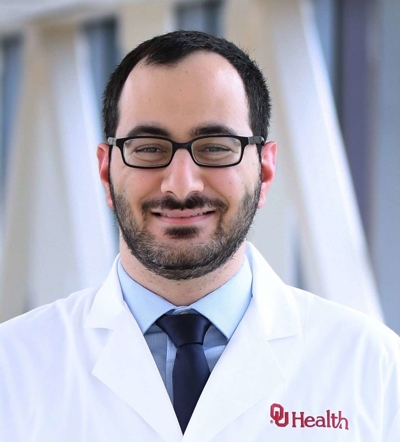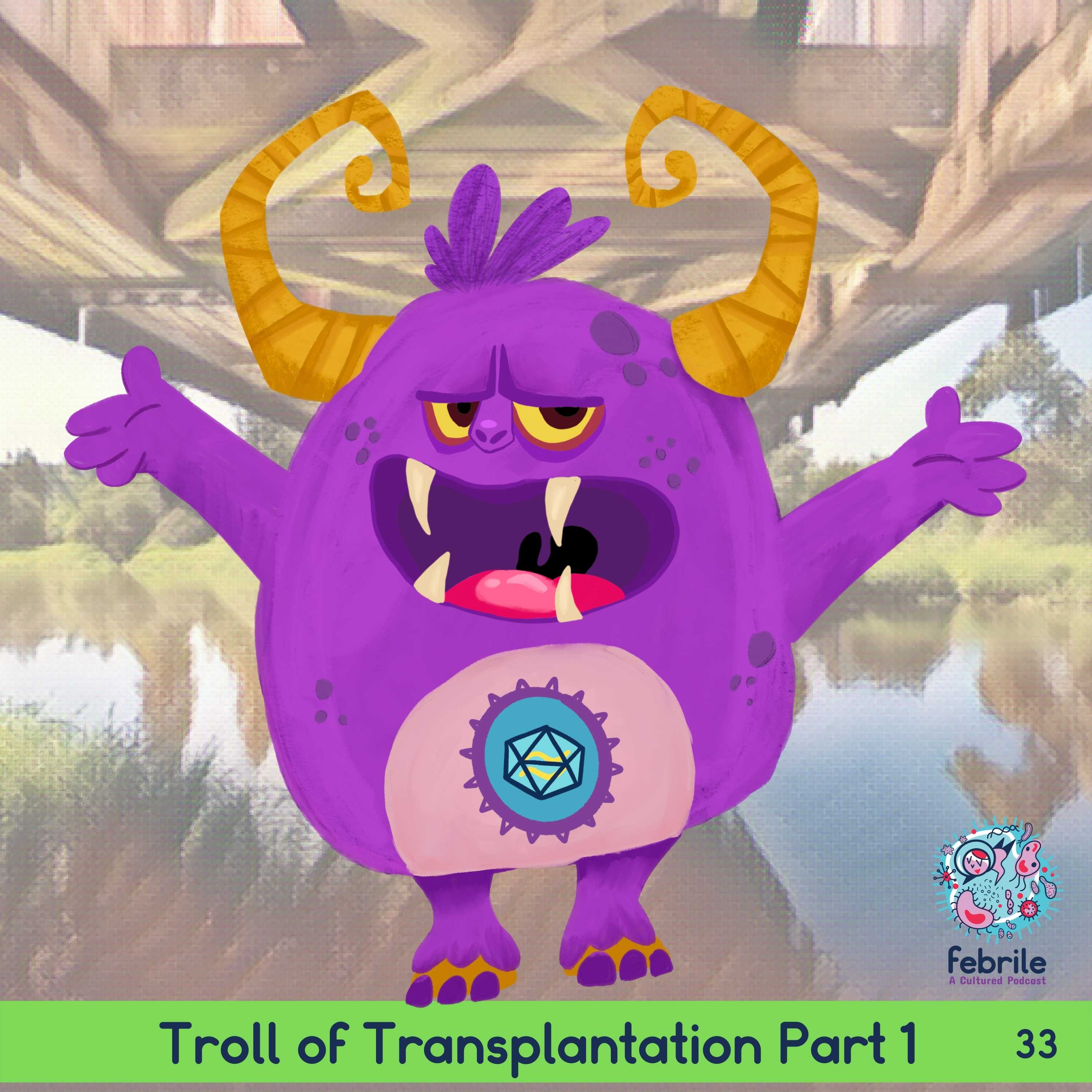Credits
Host(s): Kevin He, Sara Dong
Guest: Joseph Sassine
Writing: Kevin He, Sara Dong
Producing/Editing/Cover Art/Infographics: Sara Dong
Our Guests

Joseph Sassine is an Assistant Professor of Medicine and Transplant ID Physician at the University of Oklahoma Health Sciences Center. He previously completed his internal medicine residency at the Icahn School of Medicine at Mount Sinai – St. Luke’s-Roosevelt Hospital Center in New York City, and his infectious diseases fellowship at the University of Texas Health Science Center and MD Anderson Cancer Center in Houston.
Guest Co-Host
Kevin He, MD

Kevin is an internal medicine resident at Beth Israel Deaconess Medical Center
Culture
Joseph is a big opera fan and recommends the works of Bizet and Verdi
During the earlier stages of the pandemic, the Met Opera was streaming some works for free. Now you can access their on-demand library for a subscription at: https://www.metopera.org/Season/On-Demand/
Consult Notes
Consult Q
70 year-old male who is status post renal transplant presents with abdominal pain and diarrhea. Please evaluate for infectious causes in this immunocompromised host.
Case Summary
70 year-old male with ESRD secondary to hypertensive nephropathy who is s/p DDRT in October 2020 (CMV D+/R-, EBV D indet/R-) who is presenting with one month of fatigue, abdominal pain, and diarrhea due to CMV colitis.
Key Points
Jump to:
First off, here are some important resources to refer to regarding CMV and transplant!
- Razonable RR, Humar A. Cytomegalovirus in solid organ transplant recipients-Guidelines of the American Society of Transplantation Infectious Diseases Community of Practice. Clin Transplant. 2019;33(9):e13512. doi:10.1111/ctr.13512
- Kotton CN, Kumar D, Caliendo AM, et al. The Third International Consensus Guidelines on the Management of Cytomegalovirus in Solid-organ Transplantation. Transplantation. 2018;102(6):900-931. doi:10.1097/TP.0000000000002191
A few more general SOT resources mentioned in the show about the “net state of immunosuppression”
- Fishman JA. Infection in solid-organ transplant recipients. N Engl J Med. 2007;357(25):2601-2614. doi:10.1056/NEJMra064928
- Fishman JA. Infection in Organ Transplantation. Am J Transplant. 2017;17(4):856-879. doi:10.1111/ajt.14208
- A recent paper from CID in 2020 as well: Roberts MB, Fishman JA. Immunosuppressive Agents and Infectious Risk in Transplantation: Managing the “Net State of Immunosuppression”. Clin Infect Dis. 2021;73(7):e1302-e1317. doi:10.1093/cid/ciaa1189
Introduction
- CMV is probably the most common infection after transplant and one of the most significant complications of transplant
- CMV can affect the transplant recipient through:
- Direct lytic effects: manifests with end organ disease directly caused by CMV (such as pneumonitis, colitis, gastritis, retinitis, hepatitis…)
- Indirect effects: CMV is an immunomodulatory virus, and CMV reactivations have been associated with graft rejection, graft vs host disease, and worsening immunosuppression (by virtue of the virus or some of its therapies), which lead to a higher incidence of bacterial and fungal infections.
There are two major strategies for CMV disease prevention after SOT: (1) antiviral prophylaxis and (2) preemptive therapy.
- Check out AST ID COP Guidelines Table 2
- Prophylaxis = administration of an antiviral drug to all “at risk” patients for a determined period of time after the transplant. Duration is usually based on their risk level
- Advantages:
- Effective strategy in preventing direct and indirect CMV effects, proven effective in large randomized clinical trials
- Easy to coordinate and apply, since you are following an algorithm
- Positive impact on indirect outcomes such as graft loss and mortality
- Disadvantages:
- All patients exposed to antiviral drug: some of these patients might never develop CMV infection or diseases, so there is always the risk of over-treatment
- Risk of unnecessary toxicities and higher drug costs
- Might also delay CMV-specific immune reconstitution
- Risk of post-prophylaxis delayed-onset CMV disease, particularly in highest risk patients
- Drugs used for prophylaxis in SOT patients: oral valganciclovir or IV ganciclovir
- Letermovir approved for prophylactic use in HSCT patients but not yet approved for use in SOT >> one of the trials looking into prophylaxis with letermovir in kidney transplant recipients is estimated to be completed in April 2022, so stay tuned for new on that front!
- Advantages:
- Preemptive therapy = administration of antiviral only to asymptomatic patients with evidence of early subclinical CMV replication with aim of halting its progression to CMV disease. Based on surveillance of viremia after transplant and the administration of antiviral therapy to patients who reach a certain threshold of viremia
- Advantages
- Targets therapy to patients at highest risk
- Minimizes overtreatment, toxicities, drug costs
- Disadvantages
- A strategy purely based on preemptive therapy would miss some cases of CMV end-organ disease that are not preceded by viremia
- Relies on availability of sensitive CMV testing, and this test should have quick turnaround time to allow for quick and proactive response (so 24-48 hrs at most)
- Advantages
- These two strategies are not necessarily mutually exclusive! In real life, many institutions often actually use a hybrid of both prophylaxis and pre-emptive therapy. What proportions of each strategy are used depends on the individual patient risks.
How do we utilize the CMV D/R serostatus to help stratify their risk of infection?
As a general principle, the major risk factor for CMV disease after SOT is a qualitative or quantitative deficiency in global immunity and/or CMV specific immunity. To get an estimate of the patient’s risk, we measure pretransplant serologies for both the donor and the recipient. (The use of assays that measure CMV-specific cell-mediated immunity in the pretransplant stage is still investigational)
- Highest risk group (D+/R-): recipients that are seronegative who receive an organ from a seropositive donor
- Moderate risk group (R+): seropositive recipients
- Within this group, D+/R+ are at higher risk than those with seronegative donor (D-/R+)
- Lowest risk group (D-/R-): recipients who are seronegative and receive an organ from a seronegative donor
Beyond this, there are additional risk factors for CMV reactivation, including:
- lymphodepleting agents such as ATG and alemtuzumab
- high doses of maintenance immunosuppression
- allograft rejection (especially because it often requires additional lymphodepleting therapy)
- the type of organ being transplanted (lung and small intestine are higher risk than others)
With that information in mind, you’ll see recommendations from AST ID COP Guidelines for:
- Antiviral prophylaxis with valganciclovir 900 mg once daily or ganciclovir 5 mg/kg once daily for:
- High risk D+/R- patients
- Moderate risk R+ patients
- Duration of prophylaxis varying between 3 and 12 months depending on the level of risk of the patient (high vs. moderate) and the organ being transplanted (lung and heart-lung have the longest durations)
- They also provide recommendations regarding pre-emptive therapy as an option if logistic support is available with instructions on monitoring intervals.
- There is no specific viral load threshold provided to initiate therapy, but rather they recommend that this threshold be assay-specific, center-specific and risk-specific.
- Some patients might require longer prophylaxis and/or monitoring than the recommended durations, particularly if they receive lymphodepleting therapy for the treatment of rejection.
Joseph spent some time on the differential diagnosis of diarrhea in SOT recipients, which is broad.
- The ddx mentioned on the episode:
- Bacteria (C diff, Campylobacter, Salmonella, bacterial overgrowth, Aeromonas, E coli)
- Viruses (CMV, norovirus, adenovirus, and other usual GI viruses)
- Parasites (Giardia, Cryptosporidium, Microsporidium, Cystoisospora, Cyclospora and Entamoeba)
- Non-infectious causes, such as:
- Medication-related (immunosuppressives such as mycophenolate, tacrolimus, sirolimus, cyclosporine, and other non-immunosuppressive medications)
- Graft versus host disease
- Post-transplant lymphoproliferative disease
- Check out the AST ID COP guidelines here, especially Table 1, which outlines this differential as well: Angarone M, Snydman DR; AST ID Community of Practice. Diagnosis and management of diarrhea in solid-organ transplant recipients: Guidelines from the American Society of Transplantation Infectious Diseases Community of Practice. Clin Transplant. 2019;33(9):e13550. doi:10.1111/ctr.13550
Defining CMV infection vs disease!
- While most of these definitions are actually designed for clinical trials (to agree on standardized definitions that would allow studies to be comparable), these definitions are also important for our daily clinical practice, particularly to guide us in our diagnostic approach
- For CMV in transplant patients, there is this landmark definitions paper: Ljungman P, Boeckh M, Hirsch HH, et al. Definitions of Cytomegalovirus Infection and Disease in Transplant Patients for Use in Clinical Trials. Clin Infect Dis. 2017;64(1):87-91. doi:10.1093/cid/ciw668
- CMV infection is defined as virus isolation or detection of viral proteins or nucleic acid in any body fluid or tissue specimen
- When this specimen is the blood (plasma, serum or whole blood), we talk about viremia (culturing the virus from the blood), antigenemia (pp65 antigen detection) or DNAemia (detection of CMV DNA, the most common technique nowadays)
- CMV disease includes:
- End organ disease caused by CMV, such as pneumonia, GI disease, hepatitis, retinitis, etc
- CMV syndrome, which is an entity only described in SOT (not in HSCT) and includes detection of CMV in the blood with at least two of the following: fever, new/increased malaise/fatigue, leukopenia or neutropenia, atypical lymphocytes, thrombocytopenia, elevated AST or ALT to 2x ULN.
- You can also find these definitions summarized in AST ID COP Guidelines Table 1
- Using those definitions, it is easier to determine what diagnostic workup is needed. For GI disease, as we suspected in the podcast case, endoscopic examination is necessary. We rely on the presence of symptoms, macroscopic mucosal lesions and documentation of CMV in tissue by histopathology, IHC, culture or DNA hybridization techniques to determine a proven or definite GI CMV disease.
- Symptoms with documented CMV in tissue, but without macroscopic mucosal lesions would make it a probable GI CMV disease.
- **Documentation of CMV in the blood alone is not sufficient to diagnose CMV GI disease**
Treating CMV disease in transplant recipients! What are the treatment regimens? What is induction vs maintenance therapy? When can we make the transition between induction/maintenance?
First let’s talk about the available agents:
- First line agents are ganciclovir 5 mg/kg IV q12h or valganciclovir 900 mg PO q12h for patients with normal renal function
- It is recommended to preferentially use IV ganciclovir for patients with severe or life-threatening disease, those with a very high viral load, and those with questionable GI absorption
- For mild-to-moderate disease, oral valganciclovir and IV ganciclovir are considered equally effective
- You can refer to this RCT establishing this here: Asberg A, Humar A, Rollag H, et al. Oral valganciclovir is noninferior to intravenous ganciclovir for the treatment of cytomegalovirus disease in solid organ transplant recipients. Am J Transplant. 2007;7(9):2106-2113. doi:10.1111/j.1600-6143.2007.01910.x
- For the patients who cannot tolerate ganciclovir or valganciclovir (usually due to cytopenias) or those who fail to respond to these agents (here we are going into the refractory/resistant CMV chapter – stay tuned for part 2) → second line agents include foscarnet or cidofovir
- These agents are reserved for the second line use due to their significant nephrotoxicity
- Joseph referred to this study that showed that 50% of the patients who received foscarnet for refractory/resistant CMV developed renal dysfunction by the end of treatment, and 28% after 6 months: Gardiner BJ, Chow JK, Price LL, Nierenberg NE, Kent DM, Snydman DR. Role of Secondary Prophylaxis With Valganciclovir in the Prevention of Recurrent Cytomegalovirus Disease in Solid Organ Transplant Recipients. Clin Infect Dis. 2017;65(12):2000-2007. doi:10.1093/cid/cix696
- A newer agent, maribavir, was recently approved by the FDA in November 2021, with a much better safety profile, so that’s an exciting development!
- There have been case reports using letermovir as a second line agent off-label, but most experts would not use it in the setting of active viral replication due to the high risk of resistance development
- These agents are reserved for the second line use due to their significant nephrotoxicity
There are two stages of therapy, which includes the induction phase and then maintenance.
- Induction is the full-dose therapy stage, as Joseph described it. Administer antivirals at the full therapeutic dose mentioned previously. This is followed by maintenance, which is essentially a secondary prophylaxis phase to prevent early recurrence of CMV
- There is no preset duration for induction therapy. The AST ID COP guidelines list 3 criteria to meet before ending induction therapy:
- Resolution of clinical symptoms
- Virologic clearance below a threshold negative value (test-specific) based on weekly lab monitoring with CMV qNAT or pp65 antigenemia – Two consecutive results, or a single negative with highly sensitive assays
- Minimum of 2 weeks of antiviral treatment
- Once full-dose antiviral treatment is completed, the guidelines state that secondary prophylaxis may be considered in certain high-risk patients
- Here we transition to prophylaxis dosing as compared to therapeutic doses
- The duration of antivirals in this stage is not defined by the guidelines and different centers use different approaches, some use 1 to 3 months.
- Duration also depends on the individual patient situation, particularly in regards to lymphopenia and CMV-CMI.
- There was a retrospective study published in CID in 2017 looking at secondary prophylaxis with valganciclovir and it showed a reduction in relapse with a hazard ratio of 0.19 in the first 6 weeks following treatment completion. This benefit did not extend beyond 6 weeks of secondary prophylaxis: Gardiner BJ, Chow JK, Price LL, Nierenberg NE, Kent DM, Snydman DR. Role of Secondary Prophylaxis With Valganciclovir in the Prevention of Recurrent Cytomegalovirus Disease in Solid Organ Transplant Recipients. Clin Infect Dis. 2017;65(12):2000-2007. doi:10.1093/cid/cix696
- This is still an area that deserves more investigation to determine the optimal approach and how to incorporate the use of CMV-CMI and allow for CMV-specific T-cell immune reconstitution.
Lastly, don’t forget about other important interventions and notes mentioned on the episode:
- Cautious reduction in immunosuppression should be considered, especially in moderate to severe disease
- Can switch from IV ganciclovir to oral valganciclovir once there is clinical and virological improvement and no concerns for GI malabsorption
- You should dose adjust the drugs based on renal function, but you should not adjust down due to leukopenia or pancytopenia → underdosing is a risk factor for resistance
- IVIg or CMV-specific Ig may be considered for patients with life-threatening disease, CMV pneumonitis, or those with hypogammaglobulinemia.
Joseph ended with some exciting developments and questions in the CMV world he is thinking about!
- Maribavir for refractory or resistant post-transplant CMV!!
- Use of letermovir for primary and secondary prophylaxis (both for SOT and HSCT)
- Determining the best way to incorporate the use of CMV-CMI assays in our daily clinical practice
- Use of adoptive immunotherapy for treatment, particularly using CMV-specific CTLs (this is mostly a field of investigation in HSCT recipients)
- Joseph also noted this paper published earlier this year, looking at circulating cell-free DNA profiling in HCT recipients and how it can be used to inform all the major complications of HCT, including GVHD, disease relapse, as well as infections (by plasma virome screening): Cheng AP, Cheng MP, Loy CJ, et al. Cell-free DNA profiling informs all major complications of hematopoietic cell transplantation. Proc Natl Acad Sci U S A. 2022;119(4):e2113476118. doi:10.1073/pnas.2113476118
Other miscellaneous mentions and notes:
- Like textbook references?
- Mandell, Principles and Practice of ID, 8th Ed., 9th Ed.: Chapter 140 CMV > CMV Infection in Transplantation Recipients
- Long, Principles and Practice of Pediatric ID, 5th Ed.: Chapter 206 CMV > CMV in SOT
- Comprehensive Review of Infectious Diseases
- Pediatric Transplant and Oncology Infectious Diseases: Chapter 17 Cytomegalovirus
Episode Art & Infographics
Goal
Listeners will be able to diagnose and initiate treatment for CMV disease in solid organ transplant recipients.
Learning Objectives
After listening to this episode, listeners will be able to:
- Define CMV infection vs. disease
- Utilize CMV D/R serostatus for risk stratification of infection
- Compare and contrast prophylaxis and pre-emptive monitoring for management of CMV post-transplant
- Describe treatment strategies and the antivirals utilized for CMV disease
Disclosures
Our guest (Joseph Sassine) as well as Febrile podcast and hosts report no relevant financial disclosures
Citation
Sassine, J., He, K., Dong, S. “#33: Troll of Transplantation Part 1”. Febrile: A Cultured Podcast. https://player.captivate.fm/episode/d79fe119-ff06-4adf-a4d6-9b2fea7c21f0


